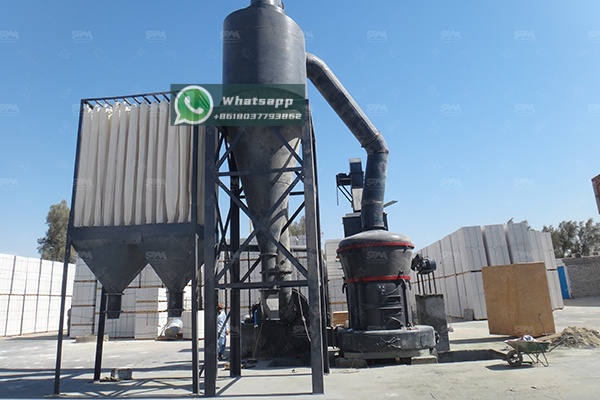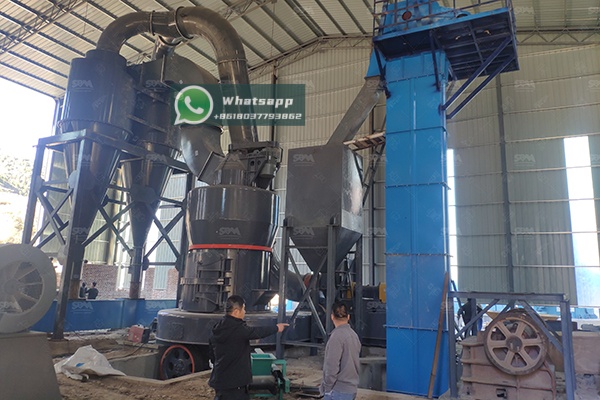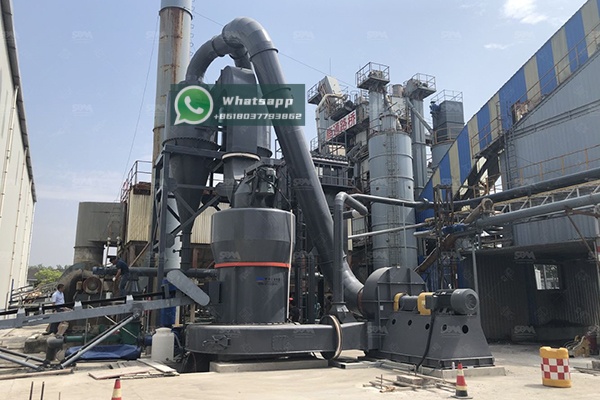The concrete block industry is continuously evolving, with a strong emphasis on improving product quality, durability, and sustainability. A key ingredient in this evolution is limestone powder. When finely ground, limestone acts as a filler and a micro-fine component that enhances the particle packing density of concrete mixtures. This results in blocks with higher compressive strength, reduced permeability, improved workability, and a smoother surface finish. The process of transforming raw limestone into a consistent, high-quality powder is critical, and this is where advanced grinding technology, such as the Raymond Mill, plays a pivotal role.

Limestone powder (often referred to as limestone filler) is not merely an inert additive. Its incorporation into the concrete block matrix offers several technical advantages:
For the concrete block industry, the ideal limestone powder typically has a fineness between 80 microns (180 mesh) and 45 microns (325 mesh). Consistency in particle size distribution is paramount to ensure predictable and uniform performance in the final block product. This level of precision requires a grinding mill capable of reliable and efficient operation.
Among the various grinding technologies available, the Raymond Mill has stood the test of time as a robust and efficient solution for processing non-metallic minerals like limestone. Its working principle involves grinding rollers applying centrifugal force to the grinding ring, crushing the material. The crushed powder is then blown up by an air blower and classified by a powder separator. Fine powder that meets the fineness requirement is collected as the final product, while coarse powder falls back to be reground.

For concrete block manufacturers, the advantages of using a Raymond Mill are significant:
Shanghai Zenith Machinery Co., Ltd., a leading manufacturer in the field of industrial grinding equipment, has made significant advancements in Raymond Mill technology. Our mills are engineered for energy saving and environmental protection, offering high grinding efficiency and exceptional economic returns. For a typical concrete block plant requiring a consistent supply of high-quality limestone powder, we highly recommend our YGM4121 Raymond Mill.
This model is particularly well-suited for medium to large-scale production demands. It features a robust design with five grinding rollers, capable of handling feed sizes up to 30mm and producing powder with a fineness adjustable between 1.6mm and 0.045mm (30 to 325 mesh), perfectly aligning with the needs of the concrete block industry.
| Model | Roller Quantity (pcs) | Max.Feed Size (mm) | Discharging Size (mm) | Capacity (t/h) |
|---|---|---|---|---|
| YGM4121 | 5 | 30 | 1.6-0.045 | 5-11 |
The YGM4121 model provides an excellent balance between capacity, energy consumption, and product quality. Its reliable performance ensures minimal downtime, which is crucial for maintaining the continuous production flow of a concrete block factory.
For operations seeking even higher efficiency, larger capacity, and more advanced features, Shanghai Zenith offers the MTW Series Trapezium Grinding Mill. This mill is an evolution of the traditional Raymond Mill, incorporating multiple national patents. It is known for its compact structure, long service life, and eco-friendly design. The MTW series is an excellent choice for producers looking to future-proof their operations.
Key upgrades in the MTW series include a conical gear-driven transmission for smoother operation, an internal efficient curved air duct for reduced air flow resistance, and a bevel blade classifier for more precise separation. For a plant with a high demand for limestone powder, the MTW175G model is a powerful option.
| Model | Max. Feed Size (mm) | Final Size (mm) | Capacity (t/h) | Main Motor (kW) |
|---|---|---|---|---|
| MTW175G | <40 | 1.6-0.045 | 9.5-25 | 160 |
Integrating a Raymond Mill into a concrete block production facility is a straightforward process. The system typically includes a jaw crusher for primary size reduction of the raw limestone, a bucket elevator or screw conveyor to feed the crushed limestone into the mill’s storage hopper, the Raymond Mill itself, and a pulse dust collector to ensure an environmentally clean operation. The entire system can be automated, requiring minimal manual intervention and ensuring a consistent supply of powder directly to the mixing station.

The quality of raw materials directly influences the quality of the final product. In the competitive concrete block industry, investing in a reliable and efficient grinding solution like a Raymond Mill from a reputable manufacturer like Shanghai Zenith Machinery is a strategic decision. It not only guarantees a consistent supply of high-quality limestone powder that enhances block performance but also contributes to lower production costs and a smaller environmental footprint. By choosing equipment like the YGM4121 Raymond Mill or the advanced MTW175G Trapezium Mill, manufacturers can ensure their operations remain productive, efficient, and capable of meeting the highest market standards.
Shanghai Zenith is committed to providing not just equipment, but complete grinding solutions tailored to the specific needs of the concrete block industry. Our technical expertise and reliable after-sales support ensure that your investment delivers maximum value throughout its lifecycle.